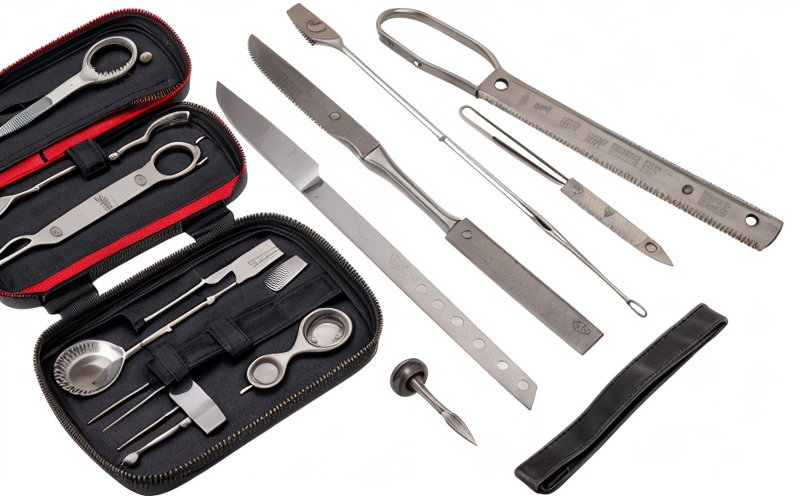ASTM F1079 Surface Passivation Testing of Stainless Steel Instruments
The ASTM F1079 standard provides a method for determining the passivation characteristics of stainless steel surgical instruments. This process is crucial in ensuring that these devices meet stringent quality and safety standards, thereby protecting patient health during surgery.
Passivation refers to the formation of an oxide film on the surface of stainless steel which enhances corrosion resistance by creating a barrier against oxygen diffusion into the metal. For surgical instruments, this is particularly important as they are often exposed to environments that could lead to corrosion if not appropriately treated.
The ASTM F1079 test involves exposing the stainless steel samples to nitric acid under controlled conditions. The presence or absence of a passive film on the surface is determined by measuring changes in the sample's electrical resistance, which can be indicative of the formation of this protective layer.
This service ensures that your surgical instruments meet the highest levels of quality and reliability, which are critical for patient safety. By adhering to ASTM F1079 standards, we help ensure that your products are compliant with international regulations and best practices in medical device manufacturing.
| Scope | Methodology |
|---|---|
|
|
Quality assurance is paramount in the medical device industry. By conducting ASTM F1079 tests, we ensure that your surgical instruments are not only safe but also reliable under various conditions they might encounter during use. This testing helps to identify any potential weaknesses early on, allowing for improvements before products reach the market.
Reliability plays a crucial role in maintaining patient trust and ensuring consistent performance across all units of your product line. Our rigorous testing procedures help maintain these standards, providing peace of mind regarding the safety and efficacy of your devices.
Use Cases and Application Examples
| Use Case | Application Example |
|---|---|
| Evaluating the effectiveness of different passivation treatments. | A hospital conducts ASTM F1079 tests on various batches of surgical instruments to compare the performance of two different passivation processes used by their suppliers. |
| Determining compliance with international standards. | An R&D engineer uses ASTM F1079 testing to ensure that newly developed stainless steel components meet international quality standards before commercial release. |





